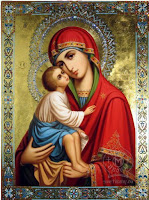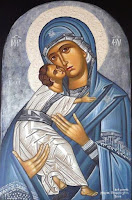Hosanna!!! A king on a donkey’s back
Fr. Dr. Joshi Varghese, Bhilai
(Diocesan Education Officer & PRO, Calcutta Diocese)
Evening: St. Mt 21: 1 – 17, Morning: St. Lk 19 : 28 – 44 , Before Holy Qurbana: Gen 49: 8- 15, 1 Sam 2:18 -26, 16 : 1, Daniel 1: 16 – 20, Micah 4:1 -5, I Kings 3: 4 – 14, Zephaniah 3: 11 -20, Jeremiah30: 18-22 Holy Qurbana: I John 5 : 1 -12, Romans8 : 18 -25 OR Eph 6 : 1-24
St. John 12: 12-19, St. Luke19: 28-40, St. Mark 11: 1-11, St. Matthew 21:1-11
All the four Evangelists describe the ‘triumphal entry’ of Jesus into Jerusalem. The event is commemorated as Palm Sunday around the globe.
a. Unquestioning submission
“If anyone asks you, ‘Why are you untying it?’ just say this, ‘The Lord needs it’ (Lk 19:31).
Biblical scholars continue to debate on whether Jesus had given prior instructions to the owners of the colt used during the triumphal entry to Jerusalem and of the room prepared for the last Supper or it was divinely predestined. The instruction to fetch the colt was short and simple; 'tell him that the Lord needs it'. The more surprising factor is that the owner allowed the disciples to take the colt without further questioning. It was a vivid example of complete submission of God's will without any hesitation.
There would be occasions similar to this in our life; when someone dear to us is lost or something precious is taken away we remain perplexed. Sometimes we go to denial mode and say 'No, this can't happen to me'. Otherwise we might show our resentment against God with the statement 'Why me?' When we are specially chosen for blessings we take it for granted and even forget to be grateful to God. But when some calamity or untoward incidents occur, we get angry at God or try to argue with God. We are to be reminded that when life poses unanswered questions, the probable answer would be ‘the Lord needs it'. An unquestioning submission to the will of God shall help us to accept our life with a smile even when it surprises us with its challenges and success.
b. The Christ’s Colt
The choices of Christ were always unique. An ordinary girl of Nazareth, a countryside , was chosen as His would be mother; manger as his birthplace; lower class people – mainly fisher folk- as His disciples; the social outcasts- tax collectors and harlots- as His friends, a donkey to ride; ‘hired out’ upper room for the Last Supper; and a borrowed tomb for ‘the sleep’. There’s a pattern in His choices; He always looked out for the last, the least and the lost. He used the lowly as His mighty instruments. It should be a motivation to those who feel lost out or dejected that they still can be instruments of God. Our lack of wealth, health, intellect or status doesn’t matter for God; what matters is whether we are ready to wholeheartedly obey God. A horse is definitely considered superior to a donkey. But it was the lowly donkey that got the privilege to carry the Creator on its back.
The call of discipleship is a call to be a fool/ donkey for Christ. St. Paul says “We are fools for the sake of Christ (1 Cor 4:10). It was the ‘foolishness’ of the Apostles and Fathers that helped the Gospel to spread around the globe. They rejoiced for “they were counted worthy to suffer dishonour for the name” (Acts 5:41). The role of the Holy Fools of Russian Orthodox Church in revitalizing the Church, from time to time is noteworthy. God can take our humble, yet dedicated offerings, be it our nothingness or our littleness and turn it into abundance as the five loaves were multiplied to feed the thousands. As depicted by G. K. Chesterton in the poem ‘The Donkey’, we might be considered as the “tattered outlaw of the earth” and forced to ‘starve and scourge’ but there can be ‘one far fierce hour and sweet’. At the same time I should always remember that the “shout about my ears, and palms before my feet” are for Him and not for me. St. Paul wrote letters which were ‘weighty and strong’, yet it was considered that his ‘bodily presence is weak, and his speech contemptible’ (2 Cor 10:10). The role of the colt in the triumphal entry of Jesus shall encourage us to submit ourselves, with all our weakness and strength, as humble instruments of God.

c. Leader on horse Vs. Leader on Colt
“Rejoice greatly, O daughter Zion! Shout aloud, O daughter Jerusalem! Lo, your king comes to you; triumphant and victorious is he, humble and riding on a donkey, on a colt, the foal of a donkey” (Zech 9:9).
The choice of donkey to travel upon for the ‘triumphal entry’ of Jesus was conspicuous due to its irony as Kings were always depicted riding the best horse available. Horse symbolises the authority and might of a king. During the time of Jesus, the Jewish expectation of Messiah was coloured with the political overtones of a strong authoritative figure who would liberate the people from the clutches of the Roman Empire. This Jewish expectation could have been best fulfilled by a Messiah riding a muscular horse than a colt.
Jesus had earlier warned the disciples about the authoritarian leadership of ‘the rulers of the Gentiles” who ‘lord it over them’. He had rightly pointed out that ‘their great ones were tyrants over them’, but the leadership of the Son of Man would be different as He ‘came not to be served but to serve (Mt 20:25-28). One of the main temptations of a Christian leader is to wield authority. Church history is replete with obnoxious examples of power wielding church leaders in spite of Jesus' exhortation for a Shepherd leadership (Jn 10:11). The Clergy (as well as the lay leaders of the Church) need to remind themselves that they are called to be shepherds and not masters. Pope Francis has rightly said that a priest “is not a boss to be feared by his flock, but a shepherd who walks alongside them and calls them by name. For the flock he is a shepherd, not an inspector, and he devotes himself to the mission not fifty or sixty percent, but with all he has…. Harshness is foreign to him, because he is a shepherd after the meek heart of God. Not only does he keep his doors open, but he also goes to seek out those who no longer wish to enter them.”
Conclusion
Palm Sunday opens the door to Holy week, where we are called to focus on the passion of Christ. Let us fix our gaze on the cross and wholeheartedly submit ourselves to His will. Let this also be a time to introspect our relationships and authorities so that we may avoid even the tinge of authoritarianism from us.
NO PAIN,NO PALM; NO THORNS,NO THRONE;NO GALL,NO GLORY;NO CROSS,NO CROWN.










